Psoriasis or scaly lichenIt is a chronic disease that affects the skin and its appendages: nails and hair. It is characterized by deterioration (relapse) and temporary health, when the manifestation of the disease becomes less frequent. This disease is not contagious, and the patient is not dangerous to others. Because the appearance of psoriasis has nothing to do with microorganisms.
Psoriasis most commonly occurs between 15 and 45 years of age. People with fair skin are more likely to be affected. In developed countries, psoriasis patients account for 2-4% of the population. Every 25 inhabitants of all continents on the planet suffer from this disease.
A large number of medical institutions are dealing with this problem. Therefore, psoriasis has been recognized as the most studied disease. However, this disease is still not fully understood. Officials believe that it cannot be cured and has caused many problems.
Psoriasis is caused by the body's own immune cells. They rise from the lower layer to the upper layer of the skin, causing inflammation, epidermal cell proliferation and the formation of small capillaries.
The manifestations of psoriasis on the skin are diverse. In most cases, this disease causes the appearance of erythema-psoriasis plaques. They are dry to the touch, rise to the surface of the skin, and are covered with a white coating.
Types of psoriasis
The disease is divided into two categories: pustular psoriasis and non-pustular psoriasis.
Non-pustular psoriasis
- Ordinary (vulgar) or simple psoriasis (plaque psoriasis, chronic stable psoriasis)
- Psoriatic erythroderma or erythrodermic psoriasis
Pustular psoriasis
- Pustular psoriasis von Tsumbusch or generalized pustular psoriasis
- Palmoplantar psoriasis (pustular psoriasis of extremities, chronic persistent palmoplantar psoriasis)
- Annular Pustular Psoriasis
- Palmoplantar psoriasis
- Herpetiform psoriasis impetigo
In addition, these types of psoriasis are different.
- Seborrheic psoriasis
- Psoriasis of flexor surface and skin folds
- Napkin psoriasis
- Drug-induced psoriasis
According to the severity, this form of psoriasis can be distinguished.
- Mild-Less than 3% of the skin is affected.
- Moderate-3-10% of the skin is covered with psoriatic plaques.
- Severe-related nodal disease or more than 10% of the skin is affected.
Causes of psoriasis

So far, there is no clear answer to the question "Why does psoriasis occur? "Scientists have proposed several theories.
- Psoriasis is an autoimmune disease. It is based on a malfunction of the immune system. The immune cells of T-killers and T-helpers, whose function is to protect the body from viruses, bacteria and tumor cells, penetrate the upper layer of the skin for some reason. Here, they produce inflammatory mediators-substances that "trigger" the inflammatory response. It causes skin cells to divide and increase their proliferation (proliferation).
- Psoriasis is a disease caused by impaired growth, division and maturation of epithelial cells-keratinocytes. The result of this change in the skin is an attack by immune cells of T lymphocytes and macrophages against diseased skin cells.
Factors that contribute to the development of psoriasis
Doctors have noticed many factors that may cause the appearance of this disease. Of course, if several of these conditions act on the body at the same time, psoriasis occurs most often.
- Genetic predisposition.There is a saying that genes responsible for the immune system and T lymphocyte function are carriers of the disease. Therefore, parents with psoriasis are more likely to give birth to children with the same symptoms.
- Dry skin. . . Someone pointed out that people with such skin characteristics are more likely to get sick than people with oily skin and well-hydrated skin. This may be due to the protective function of sebum and the structural characteristics of the skin.
- External stimulus. . . A large part of the patients are people who are often exposed to alcohol solutions, solvents, household chemicals, and cosmetics (lotions, hand creams).
- Excessive hygiene-Excessive cleaning will also destroy the protective properties of the skin. Soap, shower gel and towels will wash away the natural protective barrier and leave minor damage.
- bad habits-Alcohol, smoking and drug use are harmful to the skin. Her nutrition and blood supply are deteriorating.
- AIDS virus-AIDS patients are more likely to develop psoriasis. Scientists cannot explain this phenomenon. The fact is that psoriasis is caused by increased lymphocyte activity, and the number of AIDS patients will decrease.
- drug-Taking certain medicines can cause illness. Among them: β-blockers, antidepressants, anticonvulsants and antimalarials, lithium carbonate.
- Infection (fungus and staphylococcus). . . Many times, psoriasis appears immediately after a fungal infection or disease caused by streptococcus.
- move-Climate change, and even a certain season of the year, environmental degradation may be the cause of this disease.
- pressure-Strong mood swings or physical stress (prolonged hypothermia, overheating, accident) before the first symptoms of psoriasis appear.
- trauma-Continuous effects on the skin: pressure, friction, scratching. This frequent trauma can cause the first psoriasis plaque to appear in this place.
- Allergies-Allergic rash and processes that occur in all skin layers in this case also increase the risk of disease.
What are the symptoms and signs of psoriasis?
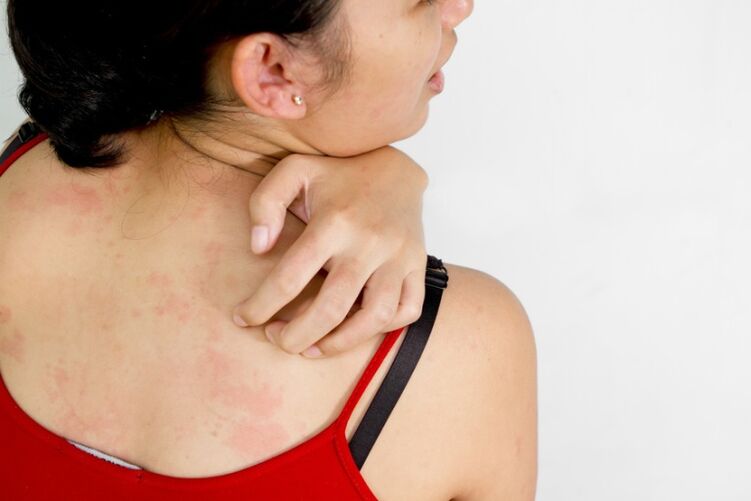
Psoriasis is a systemic disease that not only affects the skin and nails. It affects the joints, tendons and spine, immune, nervous and endocrine systems.
However, the main manifestation of the disease still occurs on the skin. The name scaly lichen conveys the symptoms of psoriasis very accurately. The initial presentation is usually a correctly round pink or bright red papule, covered with scaly-psoriatic plaques. They are distributed symmetrically and are mainly located on the extensor surface, lower back and scalp. But they can affect any part of the skin and genital mucosa. Their size ranges from the first few millimeters to ten centimeters or more.
According to the characteristics of the rash, for exampleForms of psoriasis:
- Psoriasis punctate-the size of the element is smaller than the needle.
- Psoriasis guttate-The papules are tear-shaped and reach the size of a lentil grain.
- Coin psoriasis-plaques can grow to 3-5 mm and have rounded edges.
They also distinguished the form of the rash, the geographic map with uneven edges when its elements were in the form of circles, arcs, and wreaths.
The pimples are covered with a scaly coating that can be easily removed. It is composed of keratinocytes of the epidermis. Psoriasis plaques are covered with scales from the center, and then the plaques spread to the edges. Its loose and light appearance is due to the penetration of keratinocytes by the air-filled space. A pink ring may form around the element-this is an area of inflammation, an area where plaques grow. The skin surrounding the rash has not changed.
Scalp PsoriasisRepresents psoriatic plaques that are significantly higher than the surrounding skin. They are densely covered with dandruff-like scales. In this case, the hair is not affected. The rash not only appears under the hair, but also on smooth skin, neck, and behind the ears. This change can be explained by the active division of keratinocytes in the affected area.
Psoriasis of the feet and palmsThis leads to strong thickening of the stratum corneum in these parts of the body. The skin becomes thick and rough. Cracks often penetrate it. This is caused by intensive cell division, which divides 8 times faster than usual, but is not removed from the skin surface in time.
Nail psoriasisDifferent symptoms. But the most important are the two main types of damage to the nail plate:
- Press the type of "thimble". Small pits are formed on the nail plate, similar to needle marks.
- Press the type of onychomycosis. The lesion is similar to nail fungus. The nails become thick, discolored, and peel off. Psoriasis papules surrounded by red edges can be seen through the nail plate. It looks like oil stains on nails.
The signs and symptoms of psoriasis depend on the stage of the disease, and they replace each other periodically throughout the year. Therefore, most patients belong to the "winter" type, which worsens in autumn and winter. The improvement of the illness in summer is due to the healing effect of ultraviolet rays in the sun. But some patients suffer from the "summer" type.
The course of psoriasis has the following stages:
- Progressive-the emergence of new elements, the active growth of existing plaques, the recessive pink growth zone around them, intense peeling and itching.
- Quiescence-stop the growth of papules, no new rashes, fine folds of the upper layer of skin around the psoriasis plaques.
- Regression-no peeling, disappearance of plaques and appearance of pigmented areas indicate a weakening of the process.
What is the rash of psoriasis?
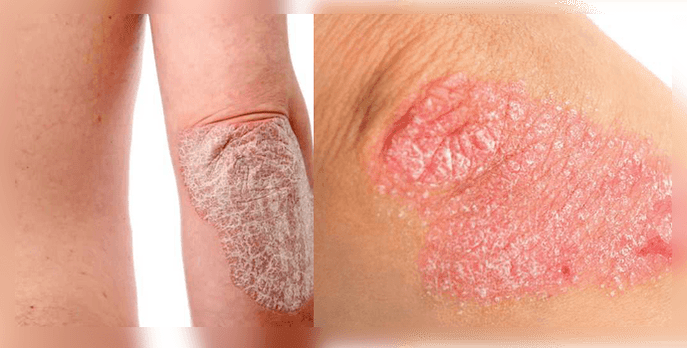
Every organism is an individual and responds differently to disease. Therefore, the nature of the rash may vary. This explains the various forms and types of psoriasis.
However, for most people, the symptoms of psoriasis are similar. These are red dots-psoriasis plaques, 1-3 mm higher than healthy skin. They appear because the cells on the skin's surface-keratinocytes divide very actively, without time to mature and become mature epithelial cells. Due to this increase in pathological growth, certain areas of the skin become thicker. This is because immune cells release chemicals that cause skin inflammation.
From above, the patch may be covered with a layer of gray, silver or yellowish flowers that look like paraffin. Therefore, they got the name-"Paraffin Lake". These are keratinized epithelial cells whose rejection response is impaired and accumulate on the surface of the affected skin area.
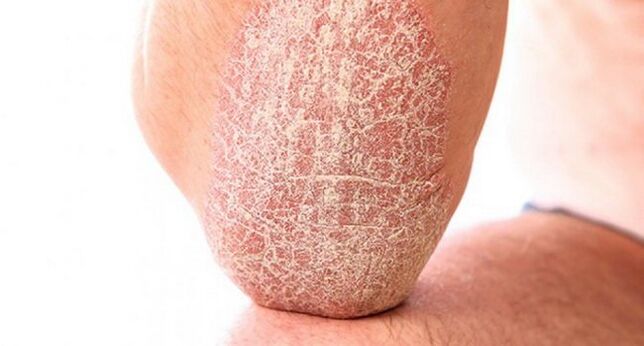
These spots are flaky, hotter than other parts of the skin, and can grow very large. Usually the patient will feel severe itching in this area. This is because in the context of the inflammatory process, a series of neural reflex reactions and allergic reactions occur.
Another type of element is pimples. These are small elements that resemble a nodular rash. The size is about 1 mm. There is no cavity filled with content in the middle. They are usually located on the knee and elbow joints. They still exist even when the disease subsides.
During the exacerbation, the components of the rash gradually widen and merge with adjacent patches. During the period of improvement (relief), the spots start to fade in the middle. They gradually become ring-shaped and can be completely dissolved. After the plaque, there will be traces on the body-hyperpigmentation. It can be brighter or darker than the surrounding skin. After a person is tanned, the skin tone will usually become even.
What is the nail pathology of psoriasis?
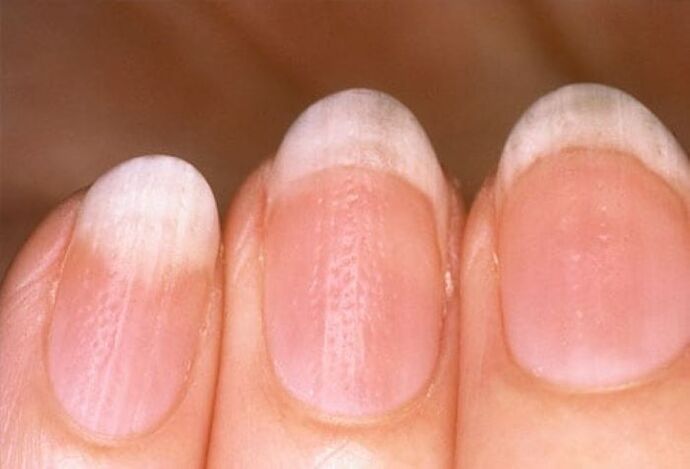
Nail psoriasis is similar to a fungal infection of the nail plate. In order to make a correct diagnosis, laboratory analysis is necessary. Changes can only affect one nail or all nails at the same time, and the changes are very large. They occur in 10-15% of patients. Nail damage is often accompanied by joint pain caused by psoriasis. In this case, there may be no rash.
There are several stages of nail psoriasis:
- Depressed point-thimble nail
- Longitudinal groove
- Lateral compression of the center of the nail. These first signs are related to damage to the nail root-the nail matrix
- "Oil spots" reveal irregularly shaped pink spots through the nails-this is the accumulation of serum under the nails
- Due to circulatory disturbances, nails become dull, cloudy, yellow and thick
- The nail plate is bird-claw-shaped with pain. This is because the process captures nerve endings.
Nail lesions start from the edge and gradually move to the root, covering the entire surface. Microcirculation disorders cause the nails to become cloudy and the color changes from yellow to blue.
If you find that you have similar symptoms, do not diagnose yourself. Similar changes may be caused by other reasons: fungus, trauma, and impaired blood supply.
Psoriasis contagious?
This question is often asked by people who have just been diagnosed and acquaintances of the patient. In this regard, scientists gave a clear answer. Psoriasis is not contagious, and one patient is absolutely safe for others. This is because psoriasis is not caused by viruses or bacteria, but by aggressive white blood cells. These own immune cells, for unknown reasons, attack skin cells and cause skin inflammation. The result of this process is a rash and thickening of the skin (psoriatic plaques) in some places.
How is psoriasis treated?
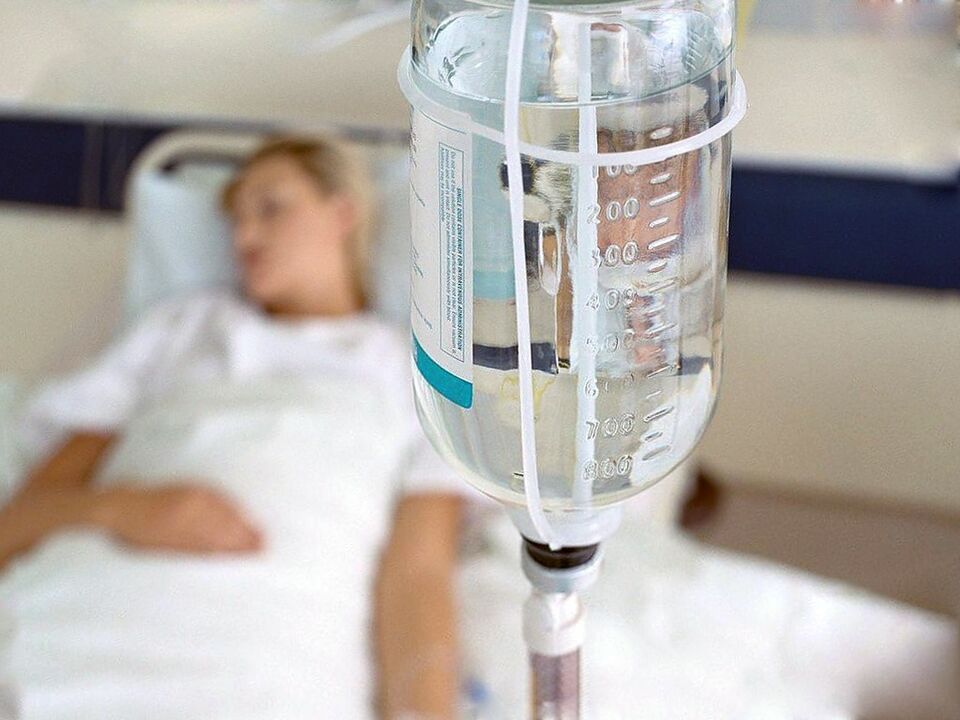
The treatment of psoriasis depends on the form and stage of the disease and sensitivity to drugs. Traditional medicine focuses on the use of medicines. Treatment starts with topical preparations that act on the affected skin. Therefore, they try to avoid the side effects that occur when taking oral medications. More details on the use of local remedies are described below. Now let's talk about pills and capsules.
There is a technique, first of all, to provide patients with milder drugs with the fewest side effects. If they are invalid, they will be replaced by more effective ones, and so on. Even if the treatment is suitable for the patient, it will change over time. The fact is that when the body gets used to this drug, its effect will diminish.
Oral systemic drugs are very effective. They are used in the moderate and severe stages of the disease. They even help patients who have been treated with other methods that have not produced positive results. However, they have obvious shortcomings: they can cause serious side effects, and after the cancellation of these funds, the condition deteriorates again.
| Drug group | The dosage form of the drug and its effect on the body |
| Retinoids-Derivatives of Vitamin A | Affect the maturation of the skin surface and eliminate the interference in this process caused by psoriasis. Release form-capsule. According to the planned dose, depending on the stage, 30-75 mg/day. Reduce the division speed of keratinocytes and promote the normal maturation and differentiation of cells. There are capsules. The daily dose is 25-50 mg. |
| Immunosuppressants-drugs that reduce the activity of the immune system | Reduce the activity of T lymphocytes, thereby increasing the division of skin cells. Sterile solution in ampoule. The initial dose for intravenous administration is 3-5 mg/kg per day, and for oral administration it is 10-15 mg/kg per day. |
| Drugs for the treatment of malignant tumors (cytostatic agents) | Inhibit the excessive growth and reproduction of epidermal atypical cells. Can be used for tablet computers. Oral 2. 5-5. 0 mg, 2-3 times a day, once a week. |
Physical therapy for psoriasis is very effective. They bring significant relief to patients, prevent the progression of the disease, and in some cases, can be used as a safe alternative to drugs.
| Physiotherapy method | Impact on the body |
| PUVA therapy or photochemotherapy | Combination of long-wave ultraviolet radiation and internal photosensitizer. The course is 20-30 programs. This method is based on the fact that ultraviolet rays penetrate deep into the skin. The photosensitizer inhibits the DNA synthesis and division speed of skin cells. For treatment, use special devices or cabins. |
| Selective phototherapy (S. F. T) | Irradiate the skin with ultraviolet light with a wavelength of 280-320 nm. The course is 15-35 programs. The treatment requires a special booth. |
| Monochromatic UV treatment | Use a laser or ultraviolet radiation lamp source to expose each focus separately. Even in hard-to-reach places, it can illuminate the focus without affecting healthy skin. It is suitable for cases where less than 10% of the skin is affected. The course of treatment is 15-30 procedures. |
| Laser Treatment | For the treatment of skin rashes, laser radiation of different wavelengths is used. The laser promotes the rapid absorption of psoriatic plaques and prevents scars from appearing in situ. The doctor individually determines the number of operations for each patient. |
| Electric sleep | The procedure is carried out on a device based on the gentle effects of weak electrical pulses on the brain. Duration 20-60 minutes. The number of programs is 10-12. Electrosleep has a calming effect. As a result, the activity of the nervous system returns to normal, the plaque begins to dissolve, and a period of happiness begins faster. |
| Magnetic therapy | Treatment with a magnetic field has a beneficial effect on the general condition. Skin itching and inflammation, joint swelling and pain reduced, mental and emotional state improved. The Betatron device is used for treatment. The duration of this process is 20 minutes. The number of students per course is 10-15. |
| Ultrasound therapy | It is used as an analgesic, antipruritic and decongestant. Promote the absorption of scars. This procedure can be used in conjunction with medication management (sonic introduction). The duration of exposure to an area is 15 minutes. To obtain the therapeutic effect, 7-14 treatment courses are required. |
| Hyperthermia | Use a special pillow with a hot mixture to heat the fabric to 40 degrees. This effect on the body normalizes the function of the immune system and reduces attacks on the skin. The duration of this process is approximately 2 hours. The number of them is determined by the doctor. |
| Bee Venom Treatment | Use electrophoresis or ultrasonic equipment to introduce substances into the body. Achieve anti-inflammatory, absorbable and anti-itch effects. The metabolism is normalized. The minimum number of programs is 10. |
It is very important for people with scaly lichens to follow a diet. Eating disorders can aggravate the condition. The menu should be rich in vitamins and at the same time simple. It should rest the intestines and liver, and not make the body allergic.
| Allowed products | fasting |
| Vegetables (pumpkin, watermelon, beets, carrots, potatoes, radishes) | Animal fat |
| Fruit (apricot, peach, apple), juice | alcohol |
| Berries (except red berries: strawberries, raspberries, red currants) | Fatty meat (pork, duck) |
| Fresh herbs | bacon |
| Lean meat (veal, beef, rabbit, turkey) does not exceed 200 grams per day | Red fish |
| Cheese, cheese, dairy products | Carbonated drinks and coffee |
| nut | Egg |
| Low-fat fish | Ice cream and milkshake |
| Seaweed | Minimal sweets and sugar |
| Whole wheat bread | Butter and shortcrust pastry |
In order to remove toxins and metabolites from the body, it is necessary to perform fasting days twice a week. They recommend kefir, apples, and vegetables.
What ointment is effective in treating psoriasis?
Compared with other external preparations, the use of psoriasis ointment brings the greatest effect. The ingredients of the ointment do not stay on the surface of the plaque, but soften the scales and enter the skin.
There are a large number of ointments available to treat psoriasis. In the first stage, the appointmentNon-hormonal ointment.
If the treatment does not produce the desired effect, then prescribeHormonal ointment. . . Treatment starts with lighter drugs with the least side effects. If no improvement is achieved, a more potent glucocorticoid ointment is prescribed.
| Name of ointment | Drug effect | side effect |
| Weak ointment | Inhibit the increase of white blood cell activity, prevent them from entering the skin, and eliminate tightness and itching. | The skin is swollen, itchy, and red. |
| Moderate ointment | It has anti-inflammatory, anti-allergic, anti-edema and anti-itching effects. It is suitable for patients with exudative psoriasis to reduce bleeding. Apply thinly to a limited area 2-3 times a day. Treatment lasts 10-14 days. | Steroid acne, skin atrophy and stretching, burning pain, itching, hypopigmentation. |
| Powerful ointment | Topical anti-inflammatory, anti-itch and anti-allergic agent. Reduce skin moisturization. Apply to the affected area 2-3 times a day for up to two weeks. Use during periods of deterioration. | Skin atrophy. |
| Very powerful ointment | It has a strong anti-itch and anti-allergic effect. Slow down the process of cell division and keratinization. Apply 1-2 times a day, and each course does not exceed two weeks. | Acne, hair loss, skin atrophy. Do not use for pustules and extensive plaque psoriasis. |
Pharmaceutical companies produce many medicines in the form of ointments. The doctor individually selects the medicine for the patient and changes it to a stronger medicine if necessary.
Don't forget that in any case of psoriasis, you should not neglect to see a doctor. After all, this disease may hide the initial stages of skin cancer.
Choosing a treatment plan for psoriasis is a long process that involves a lot of trial and error. If you don't find "your" medicine right away, don't despair. Remember, when the disease does not recur for many years, many people will achieve lasting improvement. you can also!























